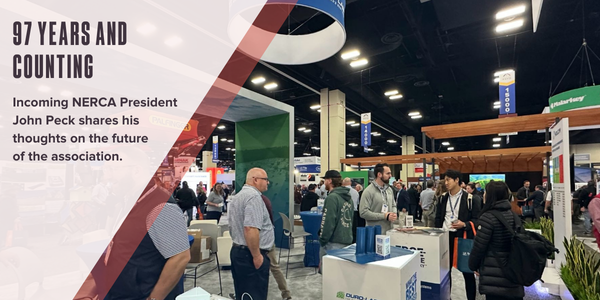Machine Regulations Have Changed, Are Your Machine Operators Safe?

By Cass Jacoby, RCS Reporter.
New Coffee Conversations confirms that safety training becomes more crucial with new equipment operating regulations.
Sponsored by National Roofing Partners, a new Coffee Conversations dives into the confusing and potentially dangerous world of safety certification for equipment operators. As equipment evolves so do classifications and training and certification standards, which is why we have compiled an expert panel from United Rentals, National Roofing Partners, Raincoat Roofing and Springer-Peterson Roofing to talk about the requirements, confusion and liabilities that roofing companies are experiencing.
Luke Borlee, region product development manager for United Rentals kicks off the discussion with an overview of the changes to machine regulations. He explains ANSI has recently changed their overall regulations to consolidate everything. “Prior to this change boom lifts were considered aerial equipment, but scissor lifts kind of floated out, are they aerial equipment or are they mobile scaffolding? So they kind of fell in two different regs,” says Luke. “Well, this new reg is calling them all MEWPs again, mobile elevated work platforms, which brings them together under these three regulations.”
Eric Suess of Raincoat Roofing elaborates on how these changes have affected him as a contractor. “With this new certification, all people, all parties on the lift needed to be certified and be aware of these things in an event of emergencies and operations and all that,” says Eric. “So we really went through a lot of our lift training and our safety.”
“It's not just one person in the basket that needs to be trained,” agrees Jamie Wetherington, who works as a trainer for mobile equipment with Springer Peterson out of Florida. “We train both, one that's an operator, one that's basket awareness, where to place hands, where not to place hands, where to stand, tools, et cetera. We really had to make some policy changes, but it's for the better.”
Eric continues by elaborating on how important training has become with the new regulations, and ensuring they are using the right machines for the right jobs. “As a whole, we've really expanded what our safety, and what our lift and all that stuff is. So it kind of sparked the whole firestorm of real overhauling what we do as a company,” says Eric.
Benjamin Gromatzky with National Roofing Partners also adds that the changes have spurred a real push towards safety within the organization. “We're making an internal push here for informing, not only our partners, but our clients about fall protection,” says Benjamin. “If it doesn't have any kind of protection or railing around it, we need to inform the client immediately, and let them know that's an OSHA violation if that hatch is open.” Everyone now needs to be well aware of how to ensure safety and how to prevent fall risk.
Luke explains how this can really affect roofers who rent multiple pieces of equipment for one site, as they could be renting a mix of old and new machines. “It's really important that [people] are paying attention as [they’re] getting on that lift to those different operating restrictions,” says Luke. “To me, this is the most important change to the aerial equipment as the manufacturers are rolling these off the assembly line.”
Read, Listen or Watch the entire Coffee Conversation to learn more about machine regulation changes and the importance of new safety training.





















Comments
Leave a Reply
Have an account? Login to leave a comment!
Sign In